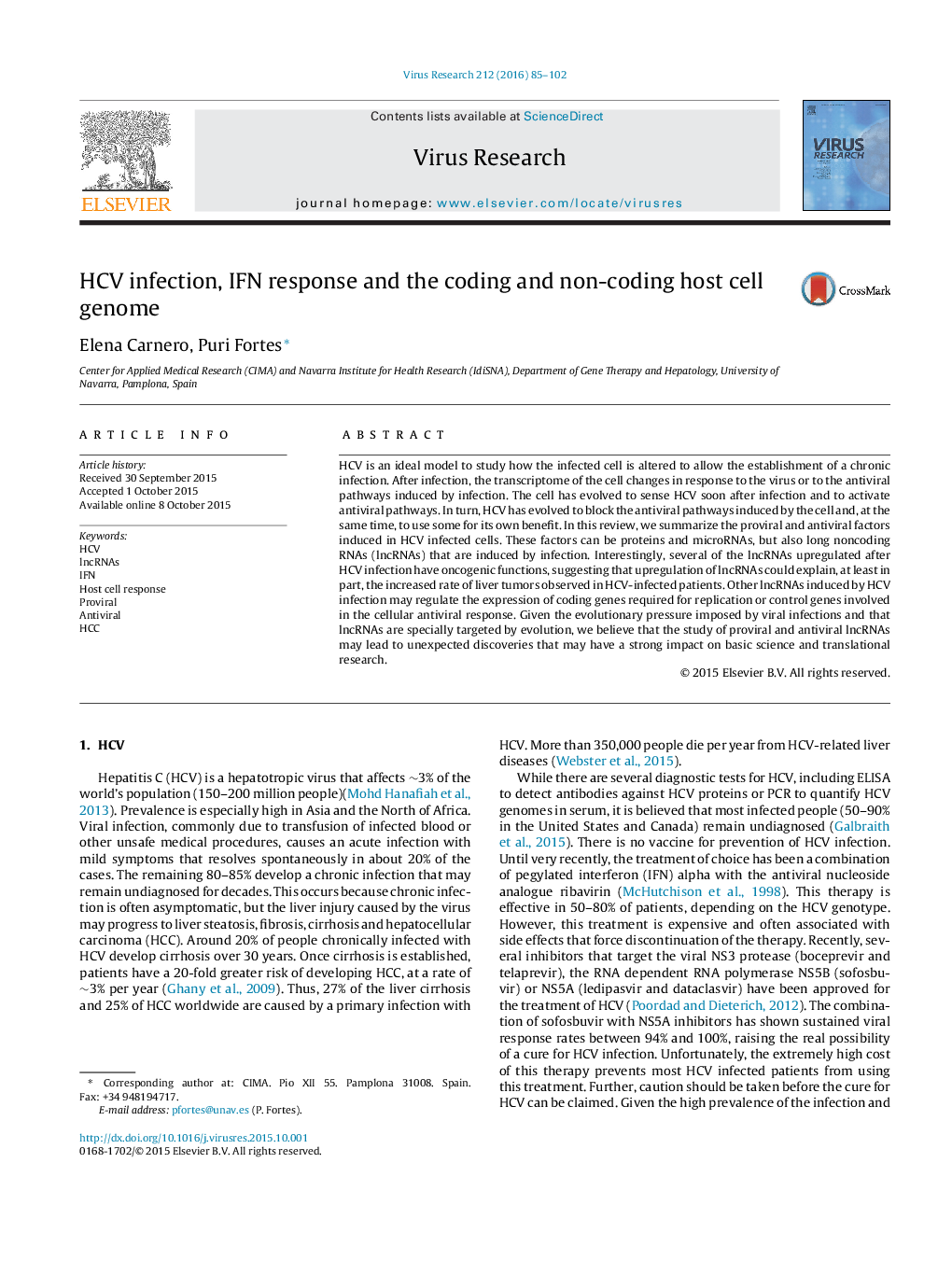| Article ID | Journal | Published Year | Pages | File Type |
|---|---|---|---|---|
| 3428098 | Virus Research | 2016 | 18 Pages |
•The cell infected with HCV changes the transcriptome to express proviral and antiviral factors.•HCV infection induces the expression of lncRNAs with proviral and antiviral functions. Some control the expression of genes involved in the cellular antiviral response.•HCV infection induces the expression of lncRNAs with oncogenic functions. This may explain in part the increased rate of hepatocarcinoma observed in HCV infected patients.
HCV is an ideal model to study how the infected cell is altered to allow the establishment of a chronic infection. After infection, the transcriptome of the cell changes in response to the virus or to the antiviral pathways induced by infection. The cell has evolved to sense HCV soon after infection and to activate antiviral pathways. In turn, HCV has evolved to block the antiviral pathways induced by the cell and, at the same time, to use some for its own benefit. In this review, we summarize the proviral and antiviral factors induced in HCV infected cells. These factors can be proteins and microRNAs, but also long noncoding RNAs (lncRNAs) that are induced by infection. Interestingly, several of the lncRNAs upregulated after HCV infection have oncogenic functions, suggesting that upregulation of lncRNAs could explain, at least in part, the increased rate of liver tumors observed in HCV-infected patients. Other lncRNAs induced by HCV infection may regulate the expression of coding genes required for replication or control genes involved in the cellular antiviral response. Given the evolutionary pressure imposed by viral infections and that lncRNAs are specially targeted by evolution, we believe that the study of proviral and antiviral lncRNAs may lead to unexpected discoveries that may have a strong impact on basic science and translational research.
